| Published
on 3
Jun 2017 |
All rights reserved.
|
|
|
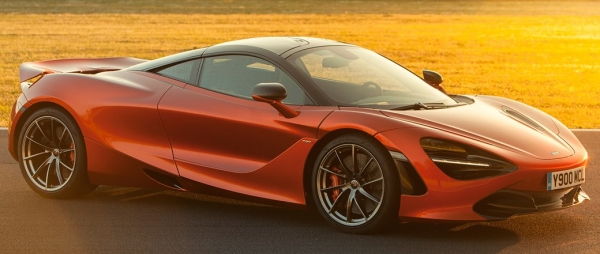
|
|
It
is now so good that Ferrari 488GTB should feel its leading position
seriously threatened...
|
|
Last year, McLaren
delivered 3286 cars, almost matching Lamborghini (3457 cars) and Aston
Martin (3687 cars), if still some way behind Ferrari (8014 cars). It
sounds even more impressive considering McLaren had just returned to
supercar business since 2011, and before that, it sold only 100 cars in
its entire history! During these 6 years, McLaren made a lot of
progress. The first MP4-12C was not quite in the same league as the
contemporary Ferrari 458. It simply lacked the aesthetic, the drama and
handling finesse to do so. However, Woking learnt quickly – certainly
more quickly than its F1 team in recent years. It took less than 3
years to improve the MP4-12C into 650S, and then one more year to build
the remarkably good 675LT. Meanwhile, the MP4-12C family, now called
“Super series”, got two more brothers, P1 and 570S, to complete
a healthy product portfolio. All these cars are built upon a common
architecture to enable quick development and cost saving. You feel that
McLaren is well planned, well funded, and it has the right talents to
develop good cars.
After 6 years, the first generation Super series is finally retired.
Taking its place and upping the game is 720S. From its name, you can
already tell it has quite a lot more horsepower and performance on
offer, yet that is
not the whole story. In fact, the car is improved in every way, no
matter looks, performance, handling, practicality or emotion. It is now
so good that Ferrari 488GTB should feel its leading position seriously
threatened!

|
|
Sexy,
futuristic and dramatic, like a modern-day Jaguar XJR-15.
|
|
The first positive impression comes from its new exterior design. It
looks a lot sexier than the MP4-12C! Remember how I described that car?
“From some angles, the MP4-12C
could look a little bulky – the nose is
not slim enough, the whale mouth a little clumsy, the inward-facing
eyes lack sparkles, the A-pillars too thick, the waist line appears too
high, the side air scoops oversized and the butt too big…” I
guess no
other automotive journalists were more critical about its design! Now
McLaren finally admits its underwhelming design, but oddly, no
one stands out to take responsibility. They said the MP4-12C was
already designed before Frank Stephenson taking the helm, although I
found Mr. Stephenson joined the company in April 2008, 17 months before
the first MP4-12C prototype was unveiled online. Anyway, the 720S has
all its faults corrected. It is penned by designer Rob Melville and is
the last McLaren overseen by Stephenson, who has just left Woking last
month.
The 720S looks very sleek and flowing. The nose is pointy and the front
splitter is razor-sharp. The front
bonnet is set low and the windscreen is large and curvy – a profile
should have been adopted by all mid-engined sports cars. The waistline
is also
low enough, and it flows sexily over the front and rear wheel arches.
Unlike its predecessor's, its A-pillars are incredibly slim, thanks to
using carbon-fiber instead of aluminum tubes to construct them. The
glasshouse cockpit has large glass area and black rails to relieve
visual mass. The butterfly doors now open also the roof to aid entry,
like LaFerrari or Enzo. Meanwhile, the huge rear spoiler is clearly
inspired by P1, curvy yet recesses flush at the tail before tilting up
at speed (for up to 30 degrees, or 80 degrees when it acts as
airbrake). Overall, the 720S is a good looking supercar, appearing
sexy, futuristic and dramatic, like a modern-day Jaguar XJR-15. You might
say it is a bit heavy-handed in some styling elements, but it is
unquestionably
the best looking McLaren so far.
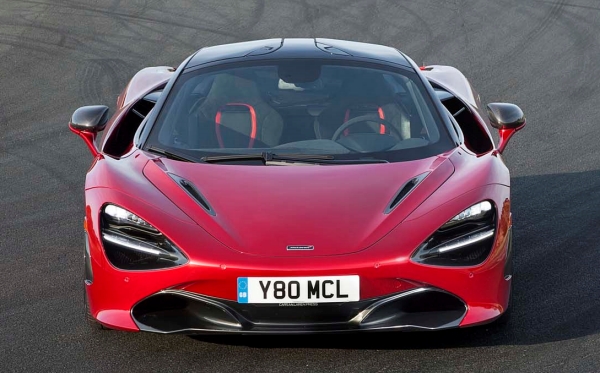
|
|
The
hidden side intakes are probably inspired by TVR...
|
|
Two of the design elements are really unique to the McLaren. The first
is the “eye-socket” headlamps. They look large, but the LED beam
elements actually occupy a small portion of them, leaving the rest for
air intakes to cool the radiators mounted just ahead of the front
wheels. Some might find them strange, but I do like them because, as I
grown up with 1980s supercars, modern LED headlamps look too slim to my
taste.
Another clever innovation is the arrangement for the side main intakes.
Modern turbocharged supercars need cumbersome side intakes to cool the
engine – Ferrari 488 is an example – which usually have the aesthetic
damaged. To avoid this problem, the 720S cleverly uses a trick tried by
TVR in the 1990s, i.e. layered body panels. TVR Griffith and Tuscan etc. used one curved
body panel to lay over another curved panel in order to hide its wide
and varying assembly gaps. The McLaren uses it not to hide gaps, but
the huge intakes for radiators! If you view from the side, you can’t
see the intakes at all. Turn to the front, Aha, now you can see the
intake sandwiched between 2 layers of body panels. Thanks to the
recessed air channels, fresh air flows smoothly towards the radiators,
enhancing cooling efficiency thus the radiators can be made
smaller and lighter. To make possible the curvy double-layer design,
most of the body panels are made of superformed aluminum. Carbon-fiber
is reserved for the successor of 675LT, obviously.
However, carbon-fiber does serve as the stressed structure. While its
predecessor was built around a carbon-fiber tub called MonoCell, the
new car has added upper structures to the tub, creating a monocoque
called MonoCage II (note: the first MonoCage was used by P1). Thanks to
the
T-bar roof, the A, B and C-pillars can be made slimmer to improve
outward visibility. The C-pillars are even transparent and glazed, so
the 720S easily offers best-in-class all-round visibility. The stronger
yet lighter carbon-fiber upper structure also lowers center of gravity
slightly and allows the door sills to be lowered to aid entry.

|
|
Best-in-class
outward visibility afforded by large glass area, including the glazed
C-pillars.
|
|
As before, aluminum subframes are attached to the front and rear of the
carbon monocoque to support the suspensions, powertrain and crash
structures. The all-round double-wishbone suspensions have been
overhauled with new geometry and control arms, saving 16 kg of unsprung
weight. The Proactive
Chassis Control, a hydraulically interconnected
damping system supplied by Tenneco, is carried over, but it gets a more
sophisticated control system with 3 more sensors each corner to measure
the acceleration of each upright and the pressure at the top and bottom
of each damper. The steering remains electrohydraulic assisted, a
relieve to keen drivers.
The 720S weighs 1283 kg dry or 1419 kg with fluid as measured by DIN
standard. It is slightly lighter than the 650S, and officially 87 kg
lighter than Ferrari 488GTB. However, as Autocar found out on scale, it
is actually 135 kg lighter than the Ferrari.
Meanwhile, its engine offers 50 more horsepower than the Ferrari as
well, making it the first in class to enter the 700hp Club, so it is
unquestionably the
faster car. According to official figures, it can sprint from rest to
60 mph in 2.8 seconds, a tenth faster than Ferrari, while 0-124 mph is
accomplished in 7.8 seconds, half a second quicker! The latest
Lamborghini Huracan Performante needs 8.9 seconds to do so, so you can
see how superior the McLaren’s straight line performance is! In its
class, it is simply unbeatable. Even a Ferrari F12tdf, which costs 60
percent more to purchase and is considered a class higher, loses to the
McLaren by a tenth of a second. As for top speed, the 720S is also
class-leading at 212 mph.

|
|
212
mph! This is easily the fastest car in its class!
|
|
Such a staggering acceleration is provided by the new M840T twin-turbo
V8, a 90-degree flat-crank unit developed by Ricardo. It is derived
from the outgoing M838T, with capacity increased to 3994c.c. thanks to
a 3.6mm longer stroke. Some 40 percent of its parts have been changed,
including lighter pistons, con-rods and stiffer crankshaft. The
titanium-aluminum turbochargers are now twin-scroll type for faster
response. Strangely, the fuel injection remains port-injection,
probably the last of its kind these days, but it gets twin-injectors
each cylinder for more precision. Boost pressure should be higher
than before, otherwise it would not have produced 720 hp at
7250 rpm. Peak torque of 568 lbft is released at 5500 rpm, which sounds
peaky for a turbo engine. The V8 is capable to spin to 8500 rpm, when
fuel is cut out, but its redline starts at
8200 rpm.
The transmission continues to be the Graziano 7-speed twin-clutch. The
McLaren still uses an open differential, lacking an LSD or active
differential. It relies on only the brake-actuated torque vectoring
called Brake Steer and an upgraded stability control called Variable
Drift Control. If these electronics are so effective, why all other
rivals bother to waste mass and money on active differentials?
Responsible for putting the power to the ground are Pirelli P Zero
tires (or P Zero Corsa for track use). The front rubbers gain 10mm
wider to improve bite and cut understeer. Stopping power comes from
large carbon-ceramic
pizzas, of course.
On the Road
Get into the cockpit, and the first impression is the easier entry
thanks to the wider-opening doors, the slightly lower sills but most
important the opening of the roof section. Once inside, you will find
the place as snug as before, since the carbon-fiber monocoque is not
known for width. You sit close to the center line and your passenger.
However, the ambience is made more airy by glass roof, expansive
windscreen and large windows all round. The promise for best-in-class
outward visibility is true.

|
|
MonoCell
II adds carbon-fiber upper structure to aid access to the cabin.
|
|
Depending on your choice, you can have the cabin and seats trimmed with
leather or Alcantara, or even gets lightweight fixed carbon bucket
seats, though it is not recommended for everyday comfort. There are
bits made of carbon-fiber, but more for looks than actual weight
saving. The interior design might look new, but it is also obviously
evolved from the MP4-12C / 650S, especially the center console with
portrait LCD. The infotainment system is said to be new, but the
touchscreen’s response and software interface remain average. The main
instrument is now a TFT screen. When you switch to Track mode, it will
fold down and reveal a simplified digital readout of only rev, speed
and gear selected. Why not simply reconfigure the screen to display
these info? It sounds gimmicky and in practice doesn’t look stylish.
Still, for ease of entry, quality and visibility, this cabin is a big
improvement from its predecessor. It also gets a luggage space above
the engine compartment in addition to the front boot.
Driving slowly in Comfort mode, the 720S is as easy-going as your BMW.
Its hydraulic suspension offers a ride comfort superior to anything in
the class, especially on poor B-roads. Tire roar is well suppressed.
Exhaust note is subdued. The twin-clutch gearbox in automatic mode
shifts smoothly. The superb all-round visibility makes it easy to place
and park. If it had more cabin space or narrower door sills, it could
have been as practical for everyday use as a 911.
But the McLaren is designed for driving fast, not for cruising. Give it
more pressure and its V8 responds positively. With twin-scroll turbos,
the Ricardo V8 responds to throttle quicker than its predecessor, but
compared with Ferrari’s marvelous V8 you can still feel noticeably more
turbo lag low down, and you need 4000 rpm to really wake it up. Once it
is fully awoken, it becomes a beast, revving eagerly towards 8000 rpm.
The power delivery above 4000 rpm is smooth and seamless, more like a
large naturally aspirated V12. Unfortunately, it lacks the aural drama
of V12. Even by the standard of turbocharged V8s, its noise is too
subdued, too industrial. It is more about wastegate whooshes and
induction noise rather than Ferrari’s angry howl or AMG’s pops and
crackles. Even with optional sport exhaust fitted, it is not a
memorable soundtrack.
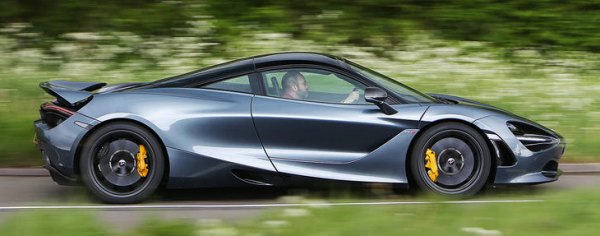
|
|
The
Ricardo V8 still lacks aural drama...
|
|
Still, the 720S feels lightning quick on the road, thanks to its lack
of mass and instantaneous gearshift. Moreover, it attacks corner with
an eagerness not found on the previous 650S. The weightier yet feelsome
steering is more confidence-inspiring. The chassis balances much
better, with less understeer on display. Although it offers plenty of
traction and enormous grip, when you really push it mid-corner, it will
be happy to oversteer slightly, and it will continue to respond to your
counter steer and throttle to adjust its angle. This makes it far more
interesting to drive than the 650S, although 675LT still has an edge in
terms of sharp response. Understandably, being a road car in the first
place the 720S has to give up some of the LT’s agility for stability,
and it is well judged.
Nevertheless, there is still room for improvement. While its handling
becomes more adjustable, it can’t sustain a power slide beautifully
like Ferrari, blame to the lack of active differential. This means the
so-called “Variable Drift Control” is somewhat misleading – it is more
about allowing slight oversteer than holding a drift. Another flaw is
the brake pedal, which lacks initial bite and could feel wooden
sometimes.
Having said that, the 720S is a huge improvement from the 650S. It is
even good enough to win over 488GTB to many, at least in the eyes of
British motoring writers. To me, however, it still lacks the passion of
Ferrari – the keen throttle response, the emotional engine sound and
the ability to power-slide precisely on track. However, the McLaren is
clearly faster and probably more interesting to look. Most important,
it finally shows a confidence to beat its rivals. The car costs
£209,000 on its home soil, 25 grand more than the Ferrari.
Nothing else can be more indicative.
|
Verdict:      |
| Published
on 18
Nov
2020 |
All rights reserved.
|
|
765LT
|
|

|
|
The
LT moniker should mean "Long Tongue" in this case...
|
|
Supercars
are getting more and more expensive, but they are hardly any rarer. Not
many years ago, you could get a brand new Lamborghini Gallardo or
Ferrari 360 at just over £100,000. Now their successors cost
double the prices. A standard McLaren 720S starts at £220,000,
yet Woking tries every possibility to inflate that price tag. The
latest attempt is 765LT. It starts at £280,000 before adding
lightweight options like carbon-fiber body panels or the specially
formulated carbon-ceramic brake discs from Senna, so this is easily a
£300K-plus supercar. If McLaren is able to sell all 765 cars it
planned to build, it will be an enormous income, helping the company a
great deal to overcome the financial difficulties it is facing right
now.
This is the third “long tail” model of McLaren, following the 675LT and
600LT. In terms of power and performance, it bridges the gap between
the road-going 720S and the track-oriented Senna. As suggested by its
name, power output of the 4.0-liter twin-turbo V8 is lifted to 765 hp,
released at an even higher 7500 rpm, while torque is improved from 568
to 590 lbft at 5500 rpm. This improvement is achieved with new forged
pistons, Senna-spec. head gaskets, higher flow fuel pump, recalibrated
ECU and centrally mounted quad-exhaust with lower back pressure, though
turbo boost stays the same. Helped further by shorter gear ratios, the
765LT sprints from 0-124 mph in 7.2 seconds, versus 7.8 sec of the
regular car. 0-60 takes 2.7 seconds, a tenth quicker. Top speed,
however, is lowered from 212 to 205 mph as a tradeoff for more
downforce.
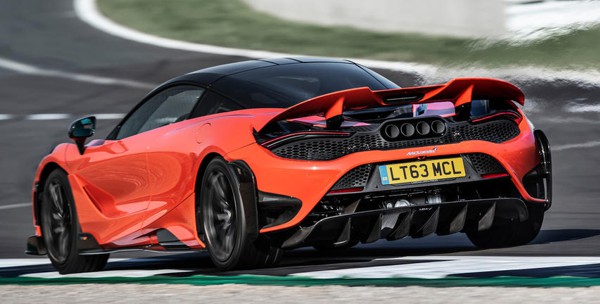
|
|
Astonishing
performance and cornering prowess.
|
|
Speaking
of downforce, the LT has a longer front splitter which extends its
front overhang by 40mm, while rear overhang is lengthened by merely
10mm, so the LT moniker should mean "Long Tongue" in this case, haha.
The active rear spoiler gets 20 percent larger and can be raised 60mm
higher. As a result, downforce is said to be improved by 25 percent
over 720S, although McLaren declines to offer absolute figures (maybe
not as high as a 911 GT3 RS, and certainly no match for Senna).
The suspension is modified as well. It uses helper springs to reduce
unsprung mass, and the spring rate is increased by 20 percent. The
front track is widened by 6mm, while front ride height is lowered by
5mm, shifting the balance towards the front. The steering rack has a
quicker ratio. The tires are track-oriented Pirelli P Zero Trofeo R.
The brake calipers are sourced from Senna, with cooling ducts
incorporated.
With all lightweight options selected, the LT is some 80 kg lighter
than 720S, with a dry weight of 1229 kg, or just 31 kg more than Senna.
Weight saving measures include lightweight forged alloy wheels with
titanium center lock (-22 kg), carbon-fiber racing buckets (-18 kg),
titanium exhaust (-4 kg), lithium battery (-3 kg), manual steering
wheel adjustment, removal of air-con and infotainment system, thinner
windscreen and side windows, polycarbonate rear screen, carbon-fiber
bumpers and aero kits, as well as optional carbon-fiber fenders, bonnet
and doors.

|
|
As
a track car, this one is close to perfect.
|
|
On track,
the 765LT is incredibly strong. If still hardly melodious, the V8 makes
a louder and angrier noise than the standard car. Keep the engine on
boil and you can hardly experience any turbo lag, while the dual-clutch
gearbox changes ratios at lightning speed. The car storms all over the
circuit. The Trofeo R tires generate huge grip, especially at the front
end. The stiffer suspension allows virtually no body lean through
corners. The brakes are incredibly powerful. As you expect from the
best McLaren, this car has all its controls expertly tuned – the
steering gives precision and great feedback, the brake pedal is
perfectly modulated. You attack apex as if you wear the car, and you
can feel the extra downforce through fast turns. Switch off all
electronic aids, you can really play with its balance. When you
overdone it, it could respond quite dramatically, not quite as
progressive as a Ferrari with e-diff, but neither it is as frightening
as any 1980s supercars. You can learn to be a better driver in this car.
As a track car, this one is close to perfect. Yes, Senna might be even
more astonishing in terms of downforce and braking, but otherwise the
765LT is just as good.
How it behaves on public road is unknown yet. In the stripped-out
cockpit you can certainly hear a great deal more noise and feel more
vibration. It won’t ride as smoothly as the 720S, too, although
probably not as hardcore as you would imagine. The carbon-fiber bucket
seats are also hard to feel comfortable over longer journeys. For sure
the 720S is more suitable for road use. You might argue that the extra
performance offered by 765LT is hardly exploitable on the road, but
just as every supercar maker will tell you, if you have money, why
not get the best?
|
Verdict:      |
| Published
on 1
Dec
2023 |
All rights reserved.
|
|
750S
|
|

|
|
Subtle
improvement from the 720S keep it competitive.
|
|
While
rivals are turning to hybridized power, the successor to McLaren 720S
remains a pure combustion machine. Oddly, even its smaller sister
Artura has made the switch to electrification, so why is the senior
McLaren keeping old-school? Cost reasons, I guess. McLaren 720S is 6
years old now, which is about time for a new generation. However,
McLaren is not in a good shape lately. Having recorded heavy losses and
needed to cut heads and sell assets, installed ex-Ferrari man Michael
Leiters as its CEO, the rate of development slowed down dramatically.
Therefore, the new 750S is only a “stop-gap” development, or what we
normally refer to “facelift”. Even though McLaren insists 30 percent of
its parts are new, it does not perform or drive very differently.
Just as its name suggested, the Ricardo-built M840T engine has its
output lifted by 30 horsepower, which is negligible for a 700hp-plus
engine. Ditto the peak torque that inches up from 568 to 590 lbft.
Lightweight pistons from the outgoing 765LT, new gaskets, higher boost
pressure and higher flowing fuel pumps made these possible. Meanwhile,
the Graziano 7-speed DCT gets a shorter final drive ratio to boost
acceleration. It takes 2.7 and 7.2 seconds to go from rest to 60 mph
and 124 mph, respectively, 0.1 and 0.6 second less than its
predecessor. That puts it a tenth quicker in both cases than Ferrari
296 GTB, which is the most significant target of the update.
Inevitably, top speed drops from 212 to 206 mph.

|
|
Exhaust
note gets more delicious, another good reason to opt for Spider version.
|
|
Besides,
the 750S is about 30 kg lighter than its predecessor. Weight saving
measures include new carbon-fiber buckets (-17.5kg), ultra-lightweight
alloy wheels (-13.8kg) and lighter windscreen (-1.6kg). It also ditched
the old car’s fancy, Transformer-style instrument for a fixed LCD
instrument, saving 1.8kg. Tipping the DIN scale at 1389 kg, it is
around 190 kg lighter than the hybridized Ferrari 296 GTB.
Surprisingly, the 750S looks almost identical to the 720S from outside.
McLaren talked of larger front intakes and a 20-percent larger rear
wing (which raises automatically and doubles as air brake), but it is
hard to spot without comparing these cars side by side. The only
noticeable difference is the twin-exhaust, which is now grouped
together at the center of the tail like 765LT, but not quite as
good-looking as the quad-pipe of that car. The 720S has always been
stylish and exotic, so is the 750S. That said, a “facelift” lacking
significant visual changes is still a let down.
Inside, the new fixed instrument is flanked with drive mode and
suspension mode switches, which looks odd but is easier to reach. The
8-inch portrait touchscreen still looks outdated, though the
infotainment system behind is updated and no longer unresponsive to
input.
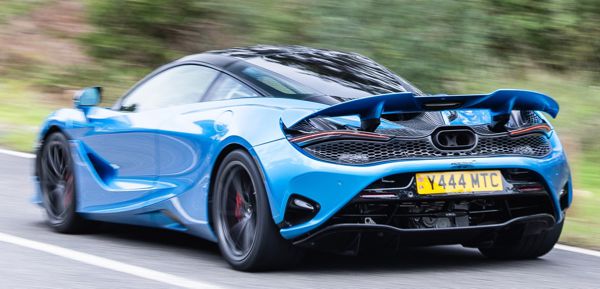 |
|
According
to McLaren, this car out-accelerates 296 GTB, just.
|
|
On the
road, the 750S is blisteringly quick. Maybe not noticeably faster than
the old car, but I doubt if you want anything faster to drive on a
public road. On the subjective side, there is still room for
improvement when going up against the best in the class, such as the
turbo lag below 4000 rpm or the sound quality of the V8 in general.
Yes, compared with 720S its exhaust note is a little more delicious,
but should be more exciting still if it wants to challenge the Italian.
Modifications to the chassis are very subtle. A slightly faster
steering ratio, 6mm wider front track, 3% softer front springs and 4%
stiffer rear springs accompanied with retuned Proactive hydraulic
suspension aim at improving balance, making the front end sharper and
understeer less in corner. We don’t remember we had ever complained
about the balance of 720S, but its successor definitely does not
disappoint in this respect. It steers sharply and gets into the apex
with almost no understeer. With so much torque, oversteer is only a
prod of throttle away. Admittedly, when the car does start sliding, it
is less tidy than a 296 GTB, because it still relies on an open
differential and brake-based torque vectoring. While Artura has
switched to active differential, the senior McLaren is handicapped by
its development budget.
That said, the 750S’ steering is better than that of Ferrari. Although
the rack gets quicker, it is still calmer and more natural than its
rival’s. Old-school electrohydraulic assistance also sets it apart from
the competition, delivering true information to your hands. However,
the 750S’ biggest achievement is still the combination of supercar
performance and handling with a supple ride, thanks to the
hydraulically interlinked suspension, which is still unique in the
class. The 750S might not be a big improvement from 720S, but building
on such a solid foundation, it is still a very good supercar.
|
Verdict:      |
|